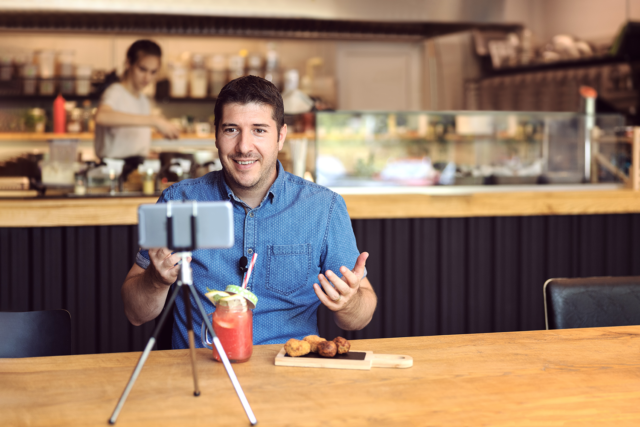In the competitive world of the restaurant industry, creating a memorable first impression is crucial. One of the most effective ways to engage potential customers is by providing a video tour of your restaurant on your website. A well-crafted video can showcase your ambiance, menu offerings, and unique features, making visitors feel more connected to your establishment. Here’s how to effectively include a video tour of your restaurant on your website.

Table of Contents
Toggle1. Plan Your Video Content
Before you start filming, it’s essential to plan the content of your video tour carefully. Consider the following elements:
- Identify Key Areas: Decide which areas of your restaurant you want to highlight, such as the dining area, kitchen, bar, and outdoor seating. Each space should tell a story about the overall dining experience.
- Script and Storyboard: Create a script that outlines what you want to convey in each section of the video. A storyboard can help you visualize how each shot will flow into the next.
- Highlight Unique Features: Think about what sets your restaurant apart—whether it’s your culinary techniques, interior design, or community involvement. Make sure to showcase these unique aspects in the video.
2. Choose the Right Equipment
Quality matters when it comes to video production. Here are some equipment options to consider:
- Camera: While professional cameras offer the best quality, a good smartphone can also produce high-quality videos. Ensure you use a tripod for stability.
- Lighting: Good lighting is essential. If possible, shoot during the day when natural light is abundant. You may also invest in softbox lights or ring lights for even illumination.
- Audio: Clear audio is crucial. Consider using an external microphone to capture any narration or background sounds effectively.
3. Film the Video Tour
Now that you have a plan and the right equipment, it’s time to film:
- Keep It Short and Engaging: Aim for a video length of 2 to 3 minutes. This timeframe is enough to capture attention without losing the viewer’s interest.
- Use Smooth Transitions: Make sure the camera movements are smooth, using pans, tilts, and zooms to create dynamic shots. Avoid abrupt cuts to maintain a polished look.
- Show Real Experiences: Capture candid moments of customers enjoying their meals or staff interacting with patrons. This adds authenticity and warmth to the video.
4. Edit the Video
After filming, it’s time to edit your video to create a polished final product:
- Video Editing Software: Use editing software like Adobe Premiere Pro, Final Cut Pro, or user-friendly options like iMovie or Filmora.
- Incorporate Music: Select background music that matches your restaurant’s vibe. Ensure it’s royalty-free or properly licensed to avoid copyright issues.
- Add Text and Branding: Include your restaurant’s name, logo, and any other relevant information. Consider adding captions or text overlays to emphasize key features or offers.
5. Upload the Video to Your Website
Once your video is ready, it’s time to integrate it into your website:
- Choose the Right Platform: You can host your video on platforms like YouTube or Vimeo and embed it on your website. These platforms offer better loading times and handle large files efficiently.
- Use High-Quality Embeds: When embedding the video, ensure you select the highest quality option available. This will enhance the viewing experience for visitors.
- Optimize for Mobile: Make sure the video is responsive and looks great on all devices, as many users will access your website from their smartphones.
6. Promote Your Video Tour
Once your video is live, it’s time to promote it:
- Social Media: Share the video on your restaurant’s social media profiles. Use engaging captions and hashtags to reach a broader audience.
- Email Marketing: Include the video in your email newsletters to reach your existing customer base. Highlight special offers or events in the video to encourage visits.
- Website Homepage: Feature the video prominently on your website’s homepage or dedicated “About Us” page to ensure maximum visibility.
7. Gather Feedback and Iterate
After your video tour has been live for a while, gather feedback from viewers:
- Analyze Viewer Engagement: Use analytics tools to see how many views your video has received, how long viewers are watching, and whether they are engaging with your content.
- Solicit Customer Feedback: Ask your customers what they think about the video and if it influenced their decision to visit your restaurant. Use this feedback to make improvements for future videos.
- Update Regularly: Consider creating new video tours for special events, seasonal menus, or renovations to keep your content fresh and engaging.
Conclusion
Including a video tour of your restaurant on your website can significantly enhance your online presence, engaging potential customers and showcasing what makes your establishment unique. By planning thoughtfully, investing in quality production, and promoting effectively, you can create a captivating experience that draws in diners and fosters a loyal customer base. Embrace the power of video—your restaurant’s next success story could be just a click away!


No responses yet